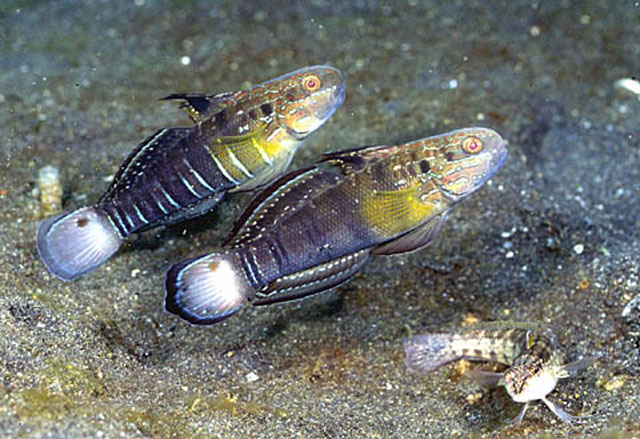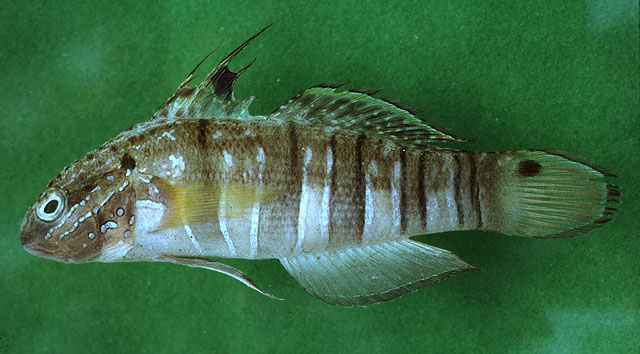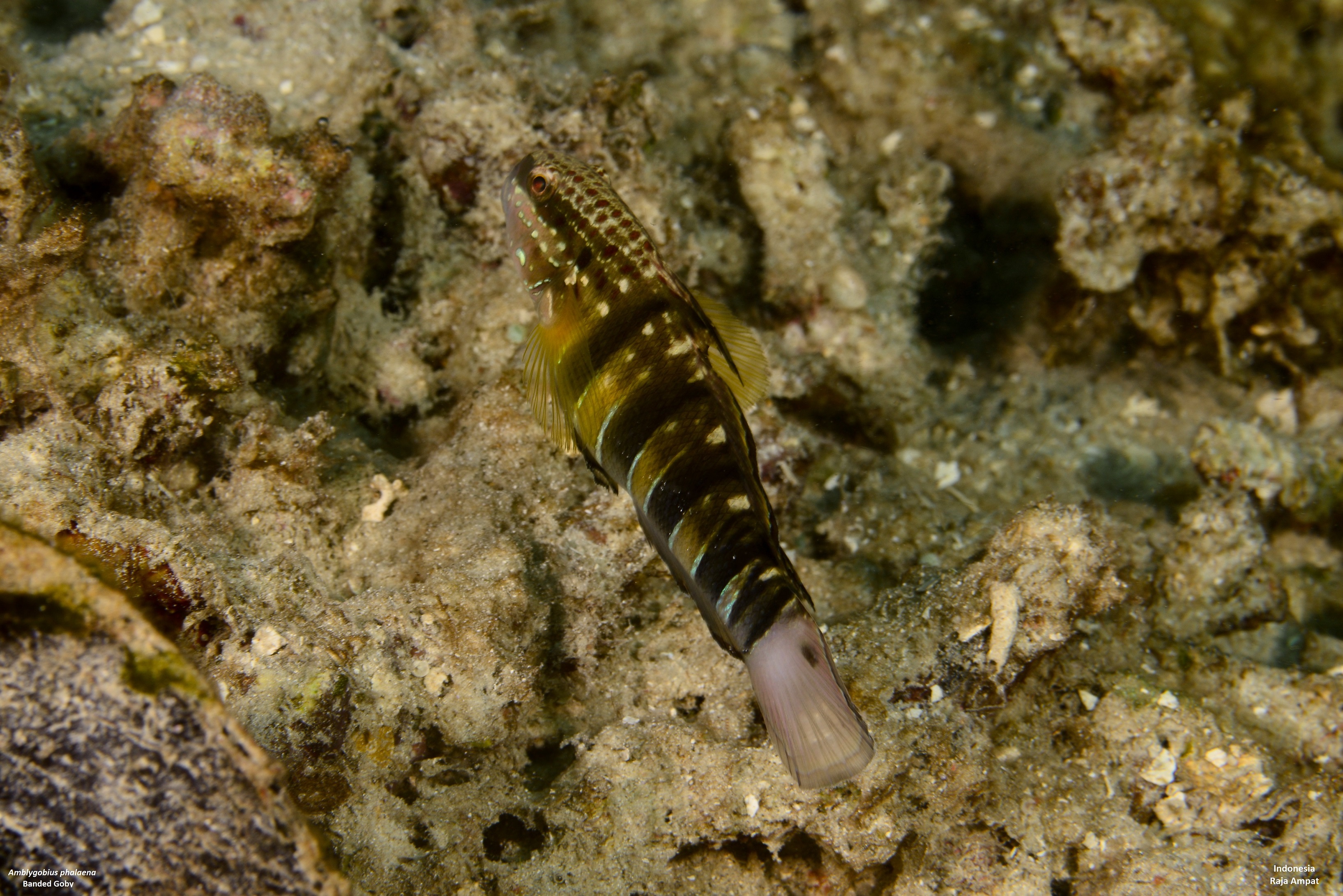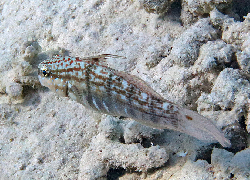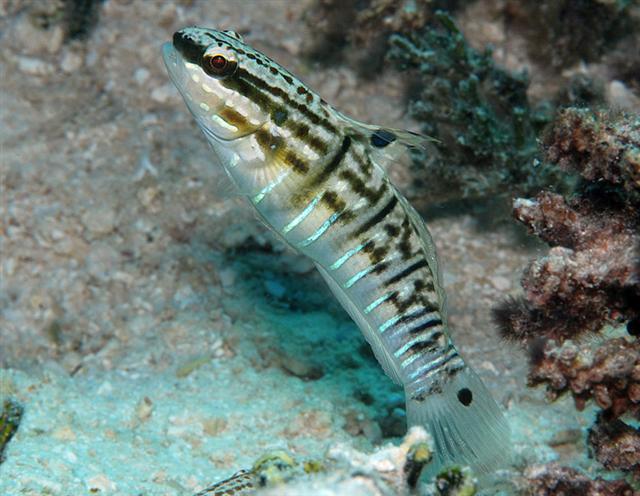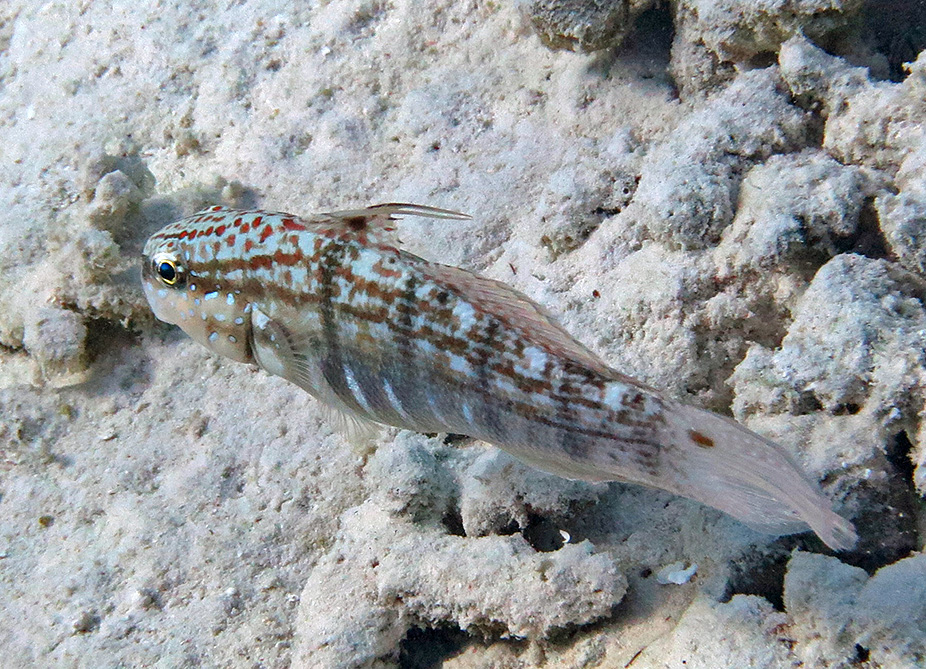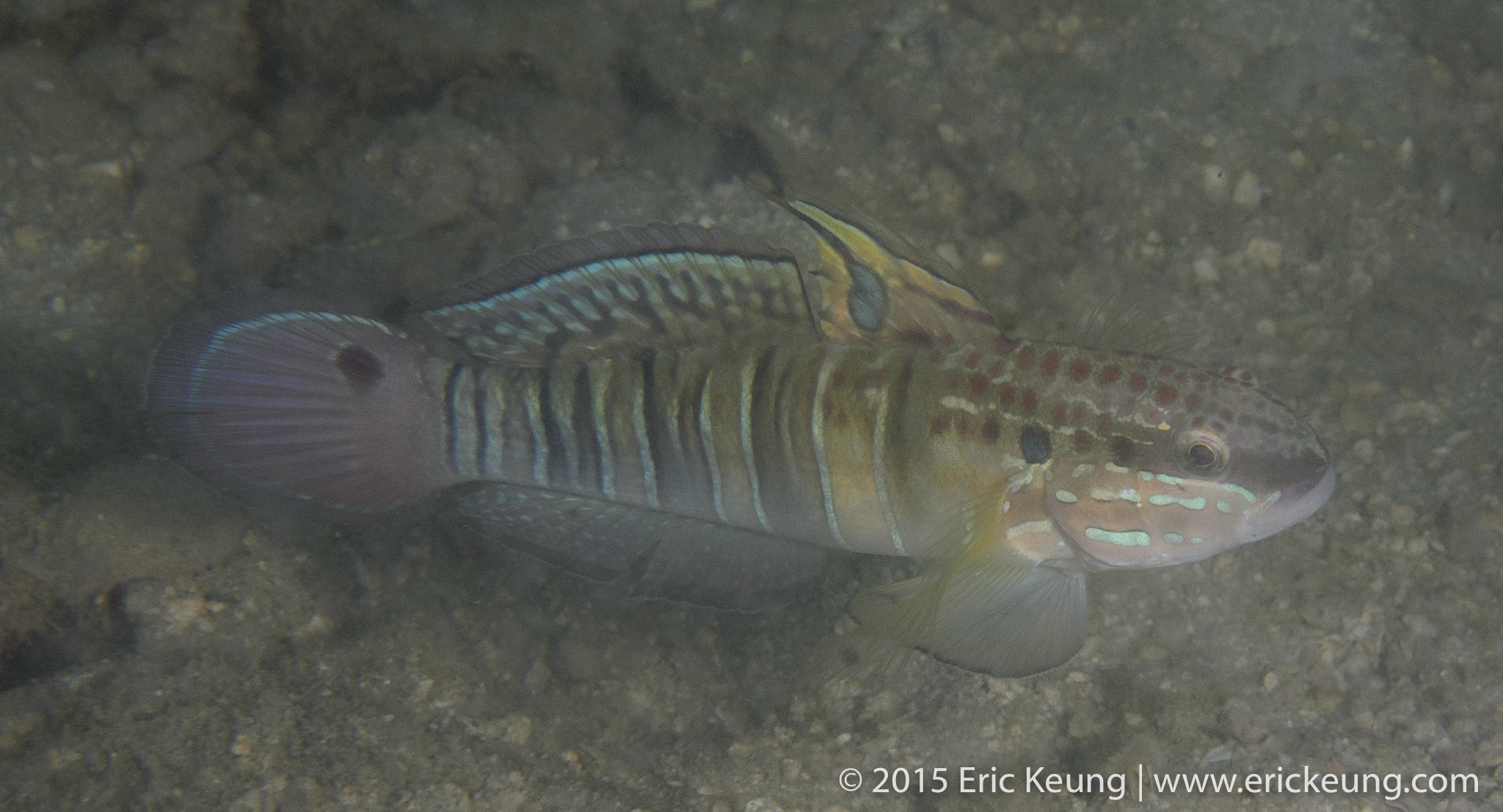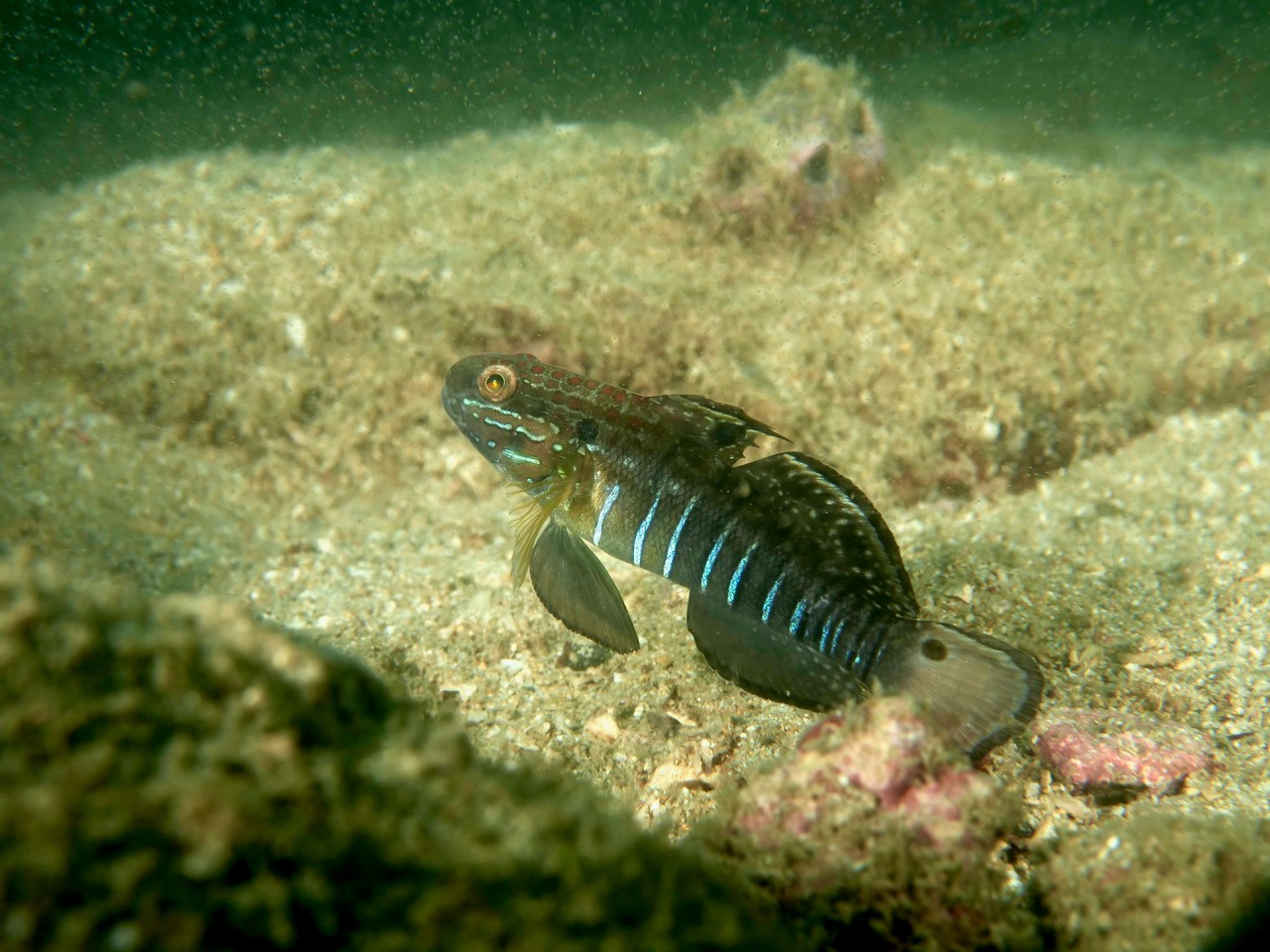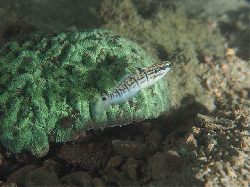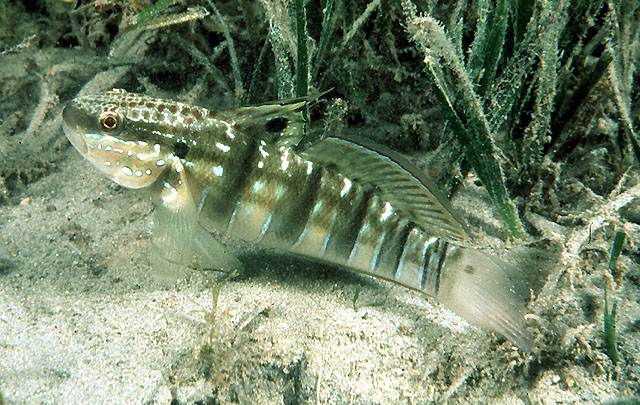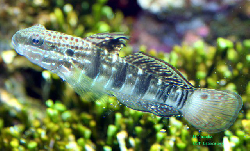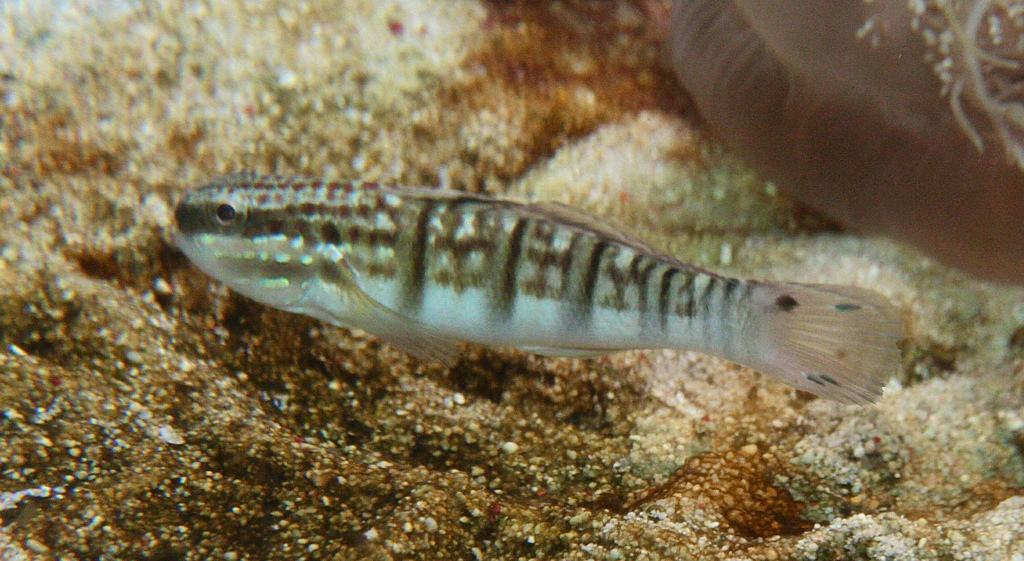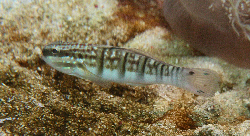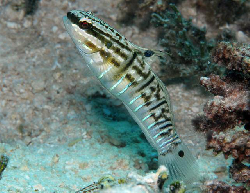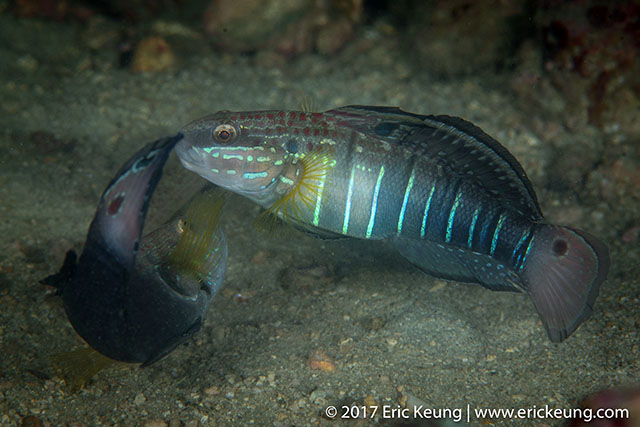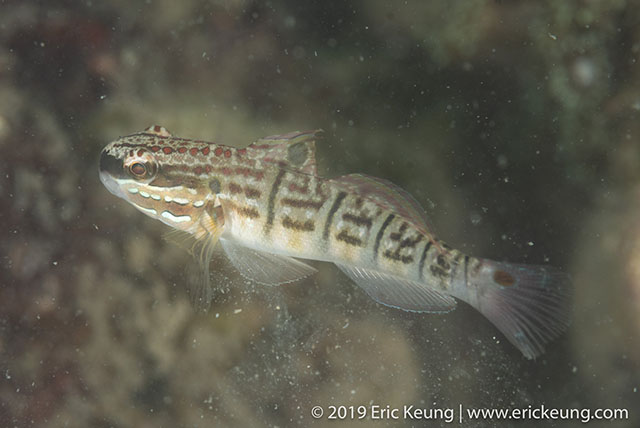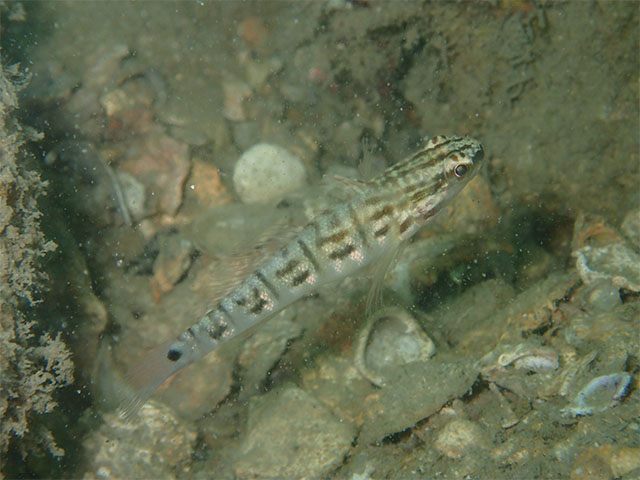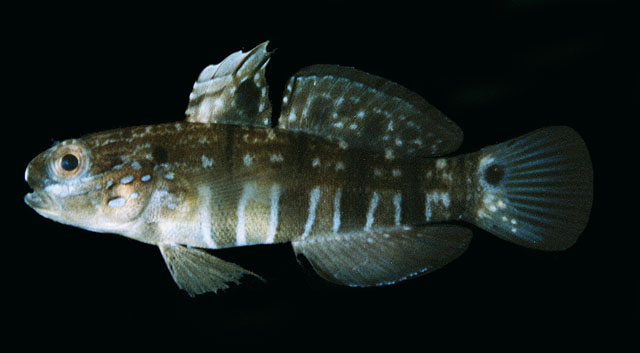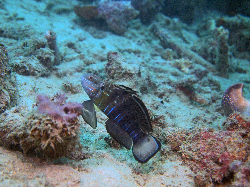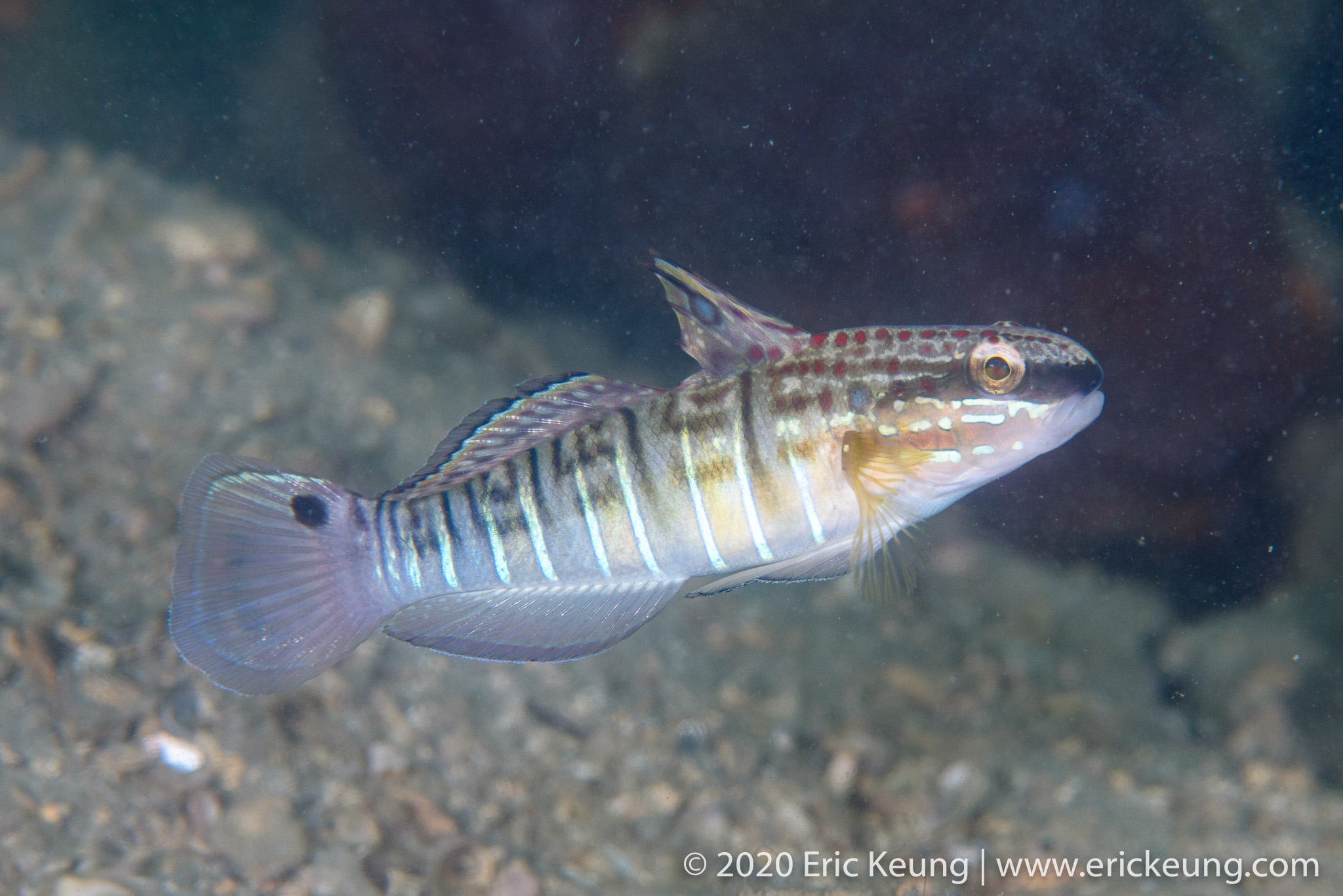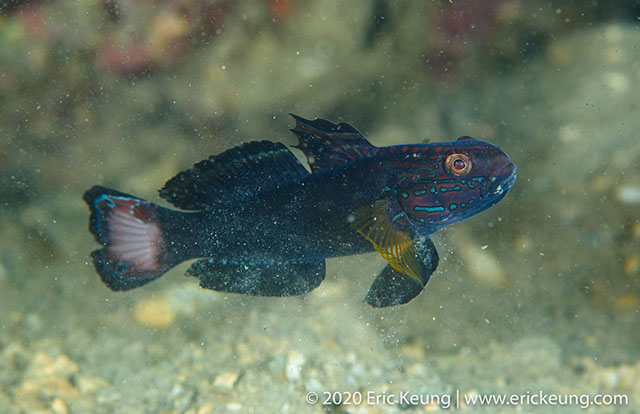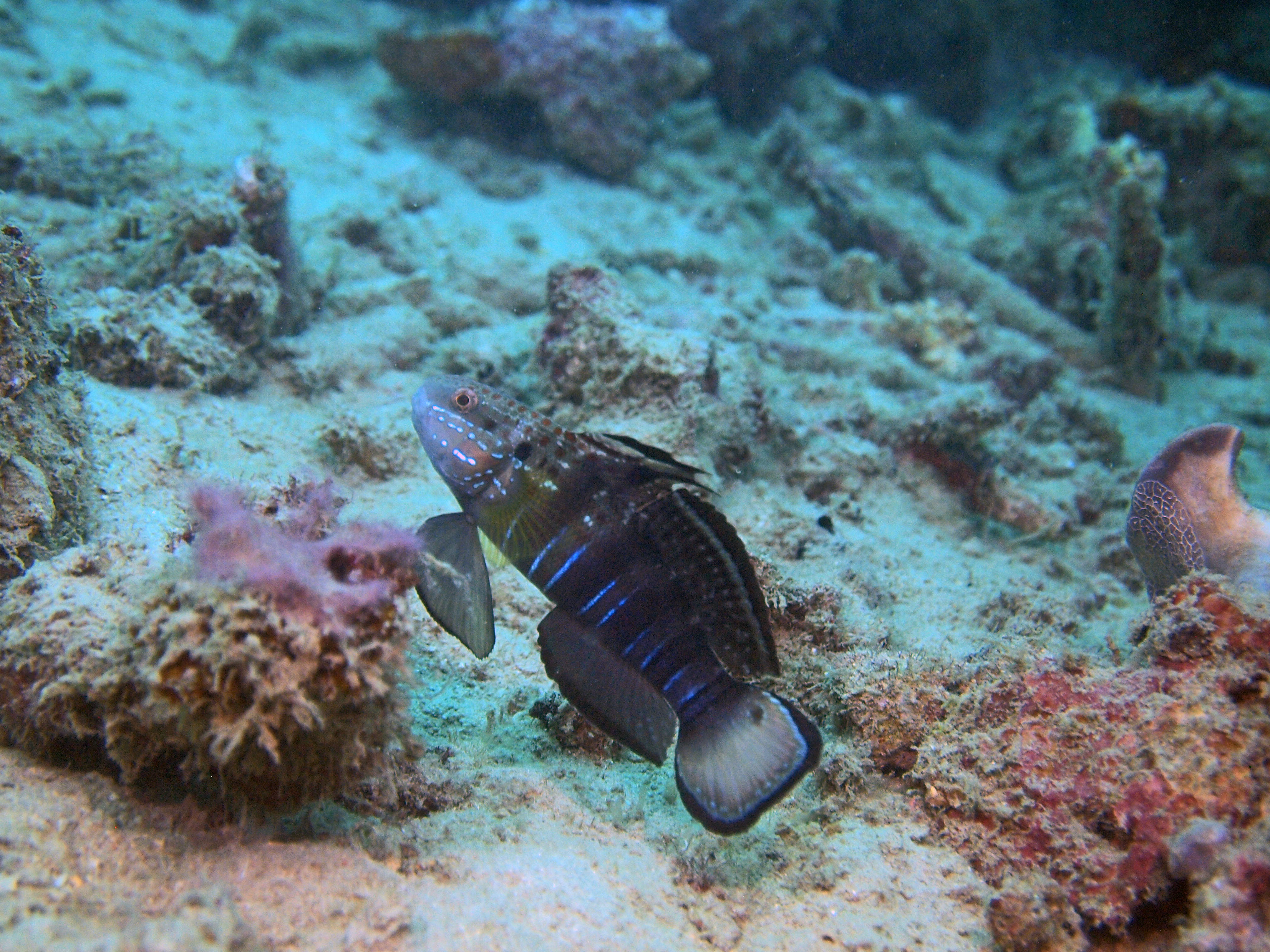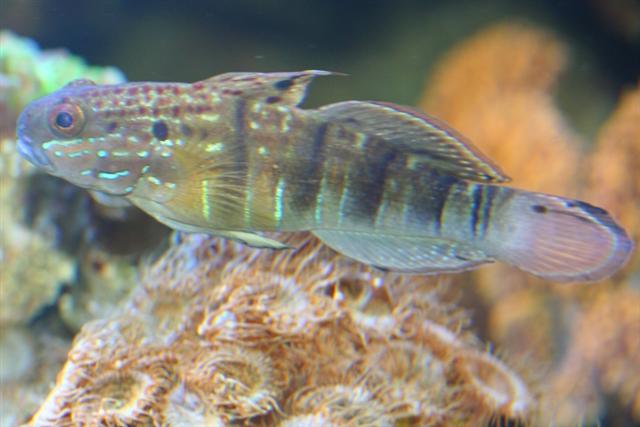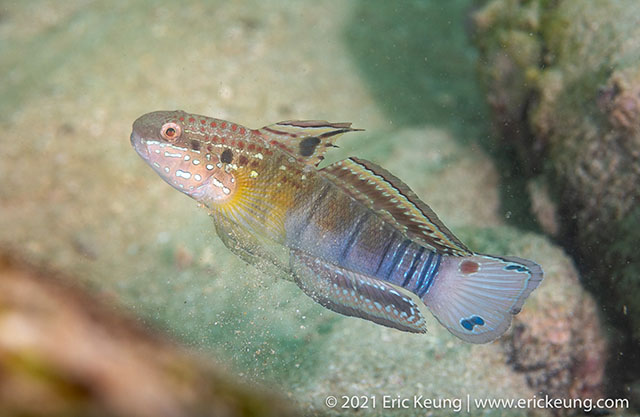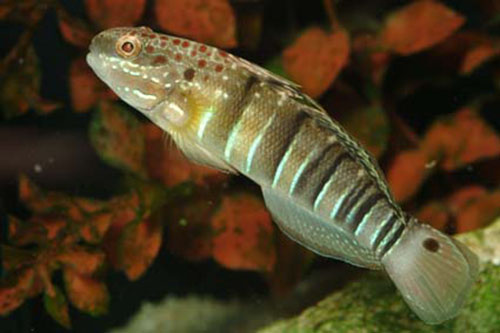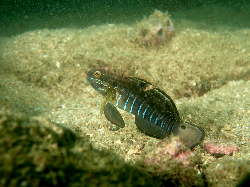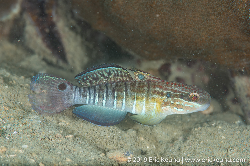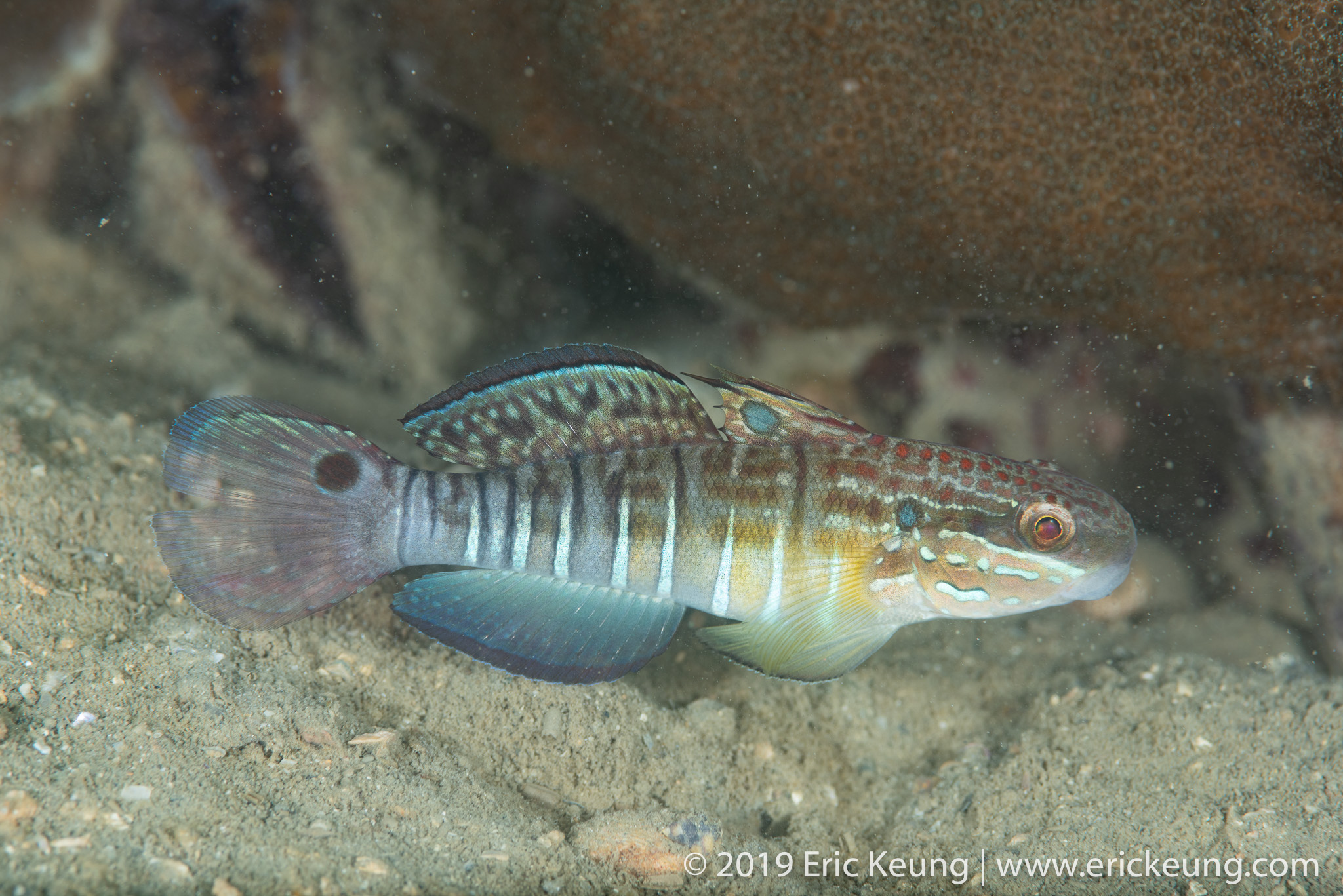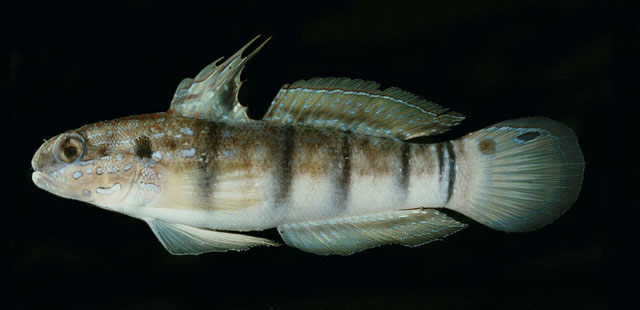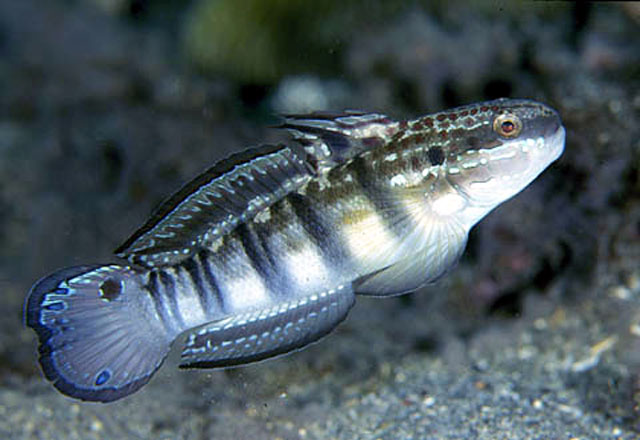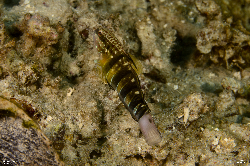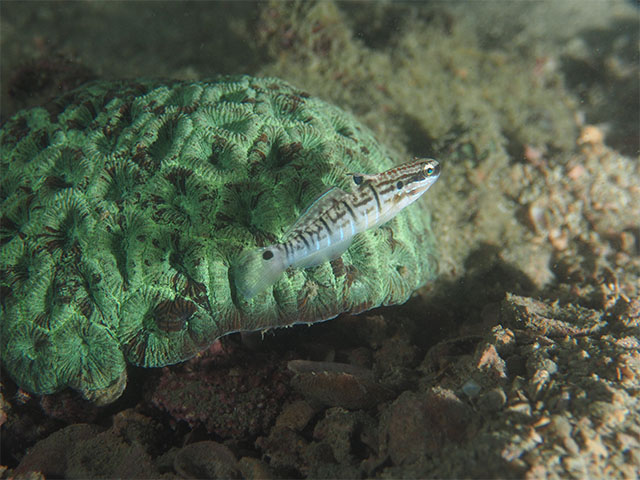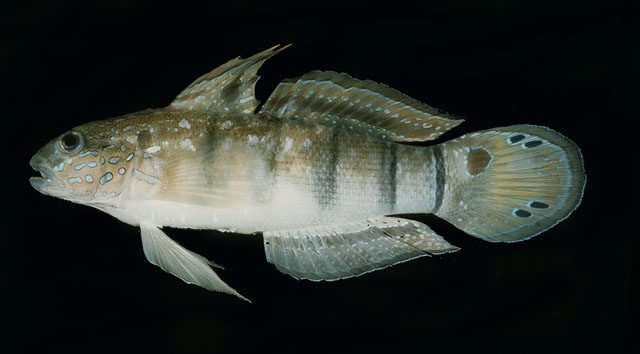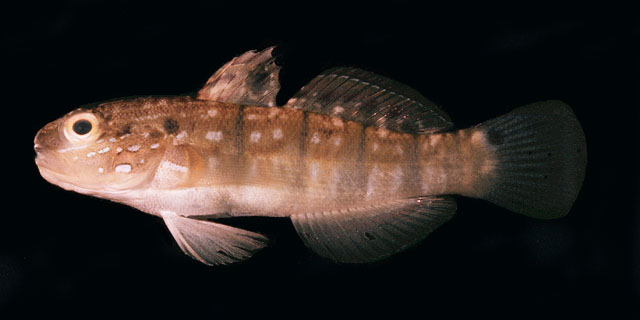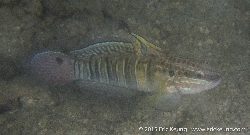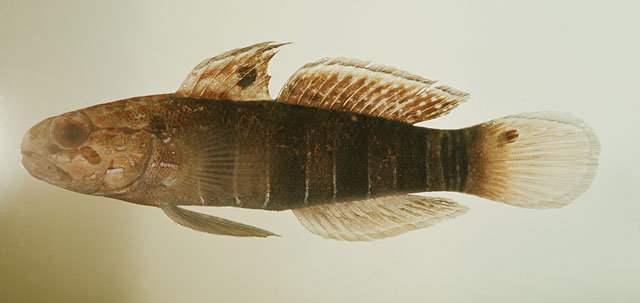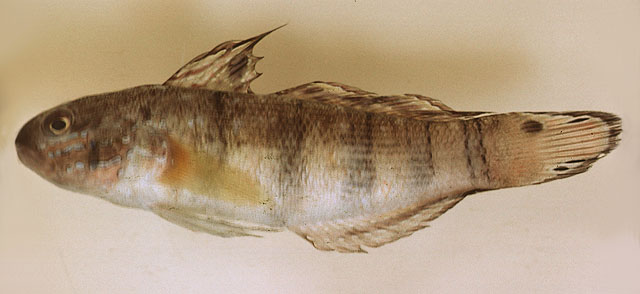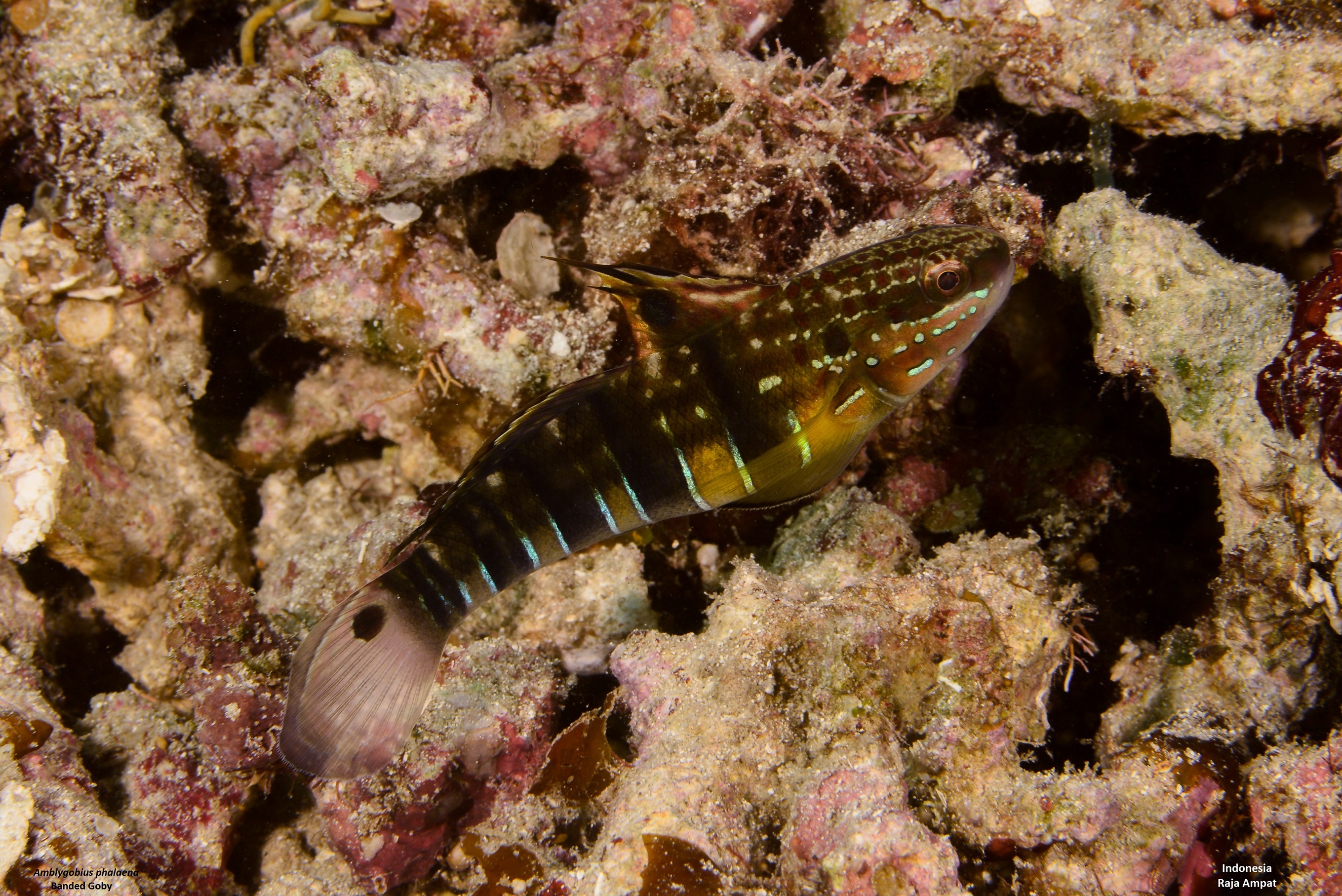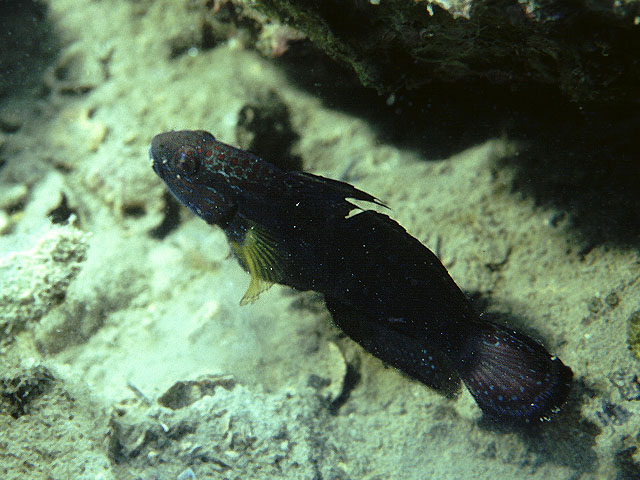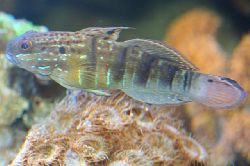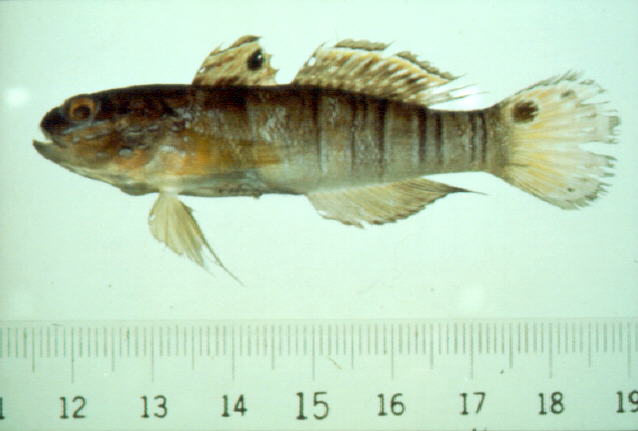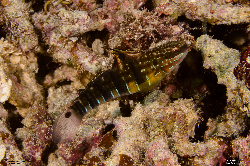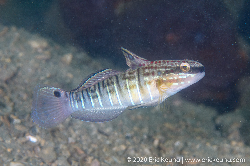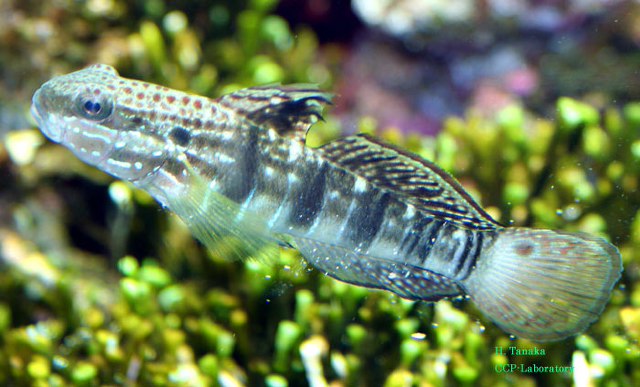Amblygobius phalaena (Valenciennes, 1837)
Description
Dorsal spines (total): 7; Dorsal soft rays (total): 13 - 15; Anal spines: 1; Anal soft rays: 14. Characterized by overall greenish brown body color with five dark brown to blackish bars; presence of pale edged dark stripe through eye and another across cheek; head with white streaks; small white spots in 3-4 horizontal rows on body; first dorsal fin with black spot and another on upper caudal fin base; prolonged third and fourth dorsal spines as short filaments, first dorsal spine longer than second; rounded caudal fin; longitudinal scale series 50-55; ctenoid scales; cycloid scales on nape, abdomen, and breast; predorsal scales extending to interorbital space; scales dorsally on opercle, absent on cheek; depth of body 3.4-4.6 in SL (Ref. 90102).
Common Names
No common names available.
Taxonomic Hierarchy
Kingdom: Animalia
Phylum: Chordata
Class: Teleostei
Order: Gobiiformes
Family: Gobiidae
Genus: Amblygobius
Species: Amblygobius phalaena (Valenciennes, 1837)
Climate Zone
Location
Biology
Solitary or in pairs (Ref. 90102). Adults inhabit coastal reefs and lagoons on sand and rubble margins of algal reefs and sometimes near seagrass beds (Ref. 48637). Feed by sifting mouthfuls of sand and expelling it through the gills, to capture small invertebrates, organic matter, and large quantities of algae. Monogamous (Ref. 52884). Spawning is synchronous with semilunar periods (Ref. 84980). Eggs are deposited in burrows which are tended by the male parent (Ref. 55919, 84980). Minimum depth reported from Ref. 27115. Also Ref. 58652.
Habitat
associated
